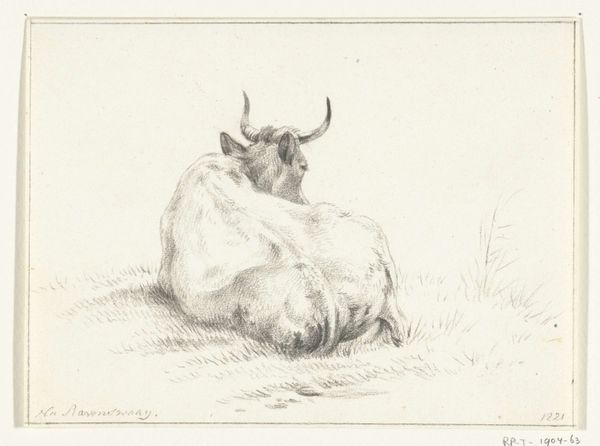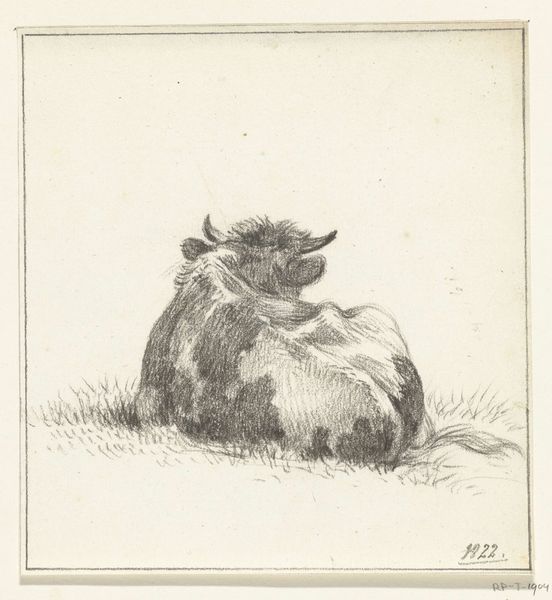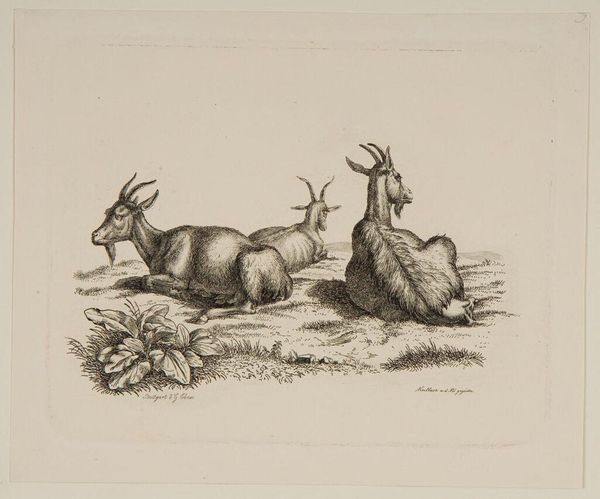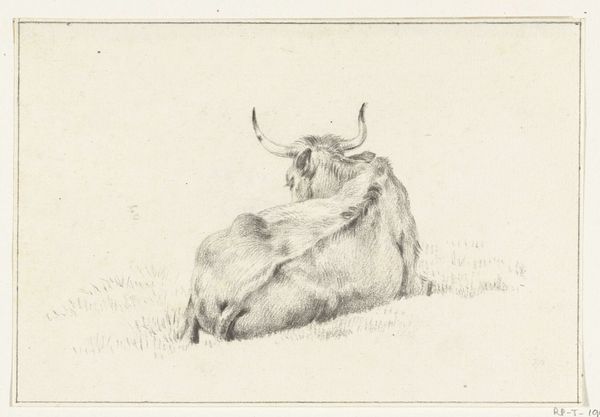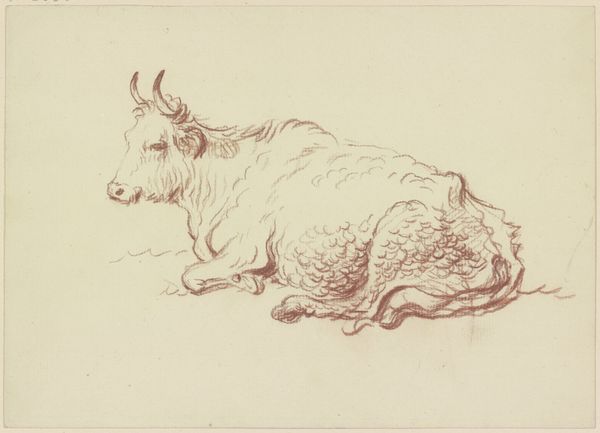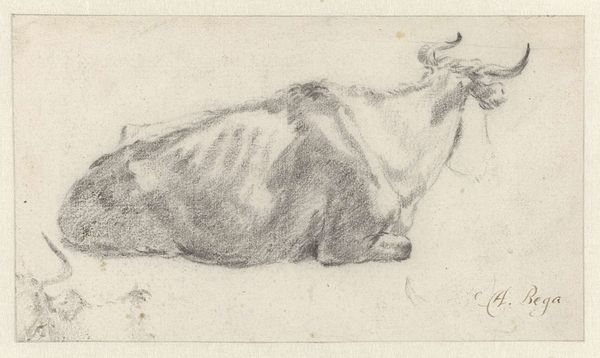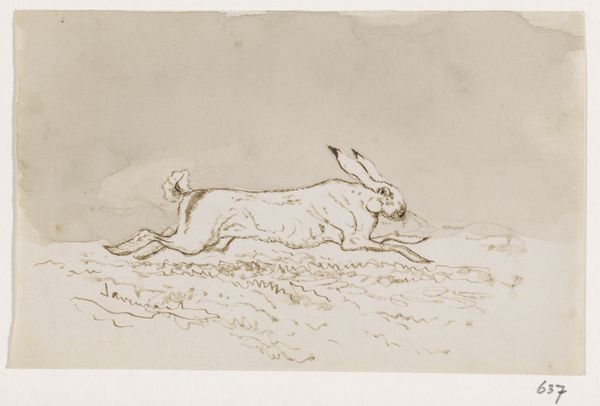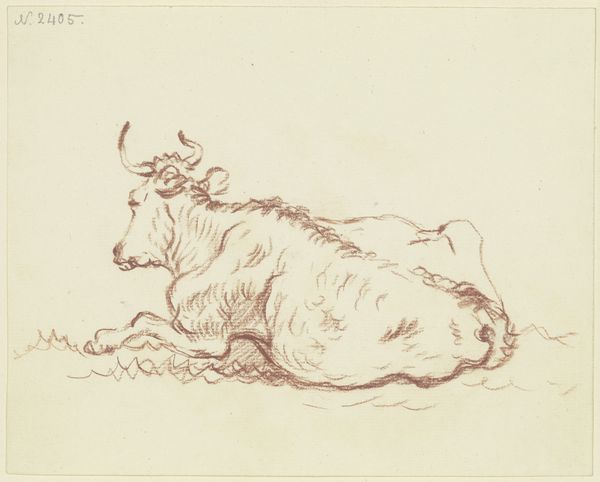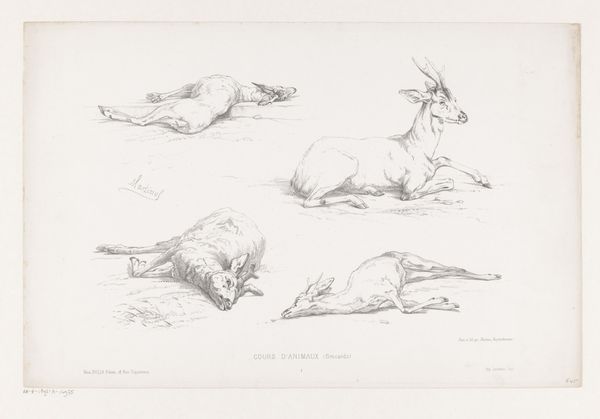
drawing, pencil
#
drawing
#
animal
#
pencil sketch
#
landscape
#
etching
#
pencil
#
watercolour illustration
#
genre-painting
#
watercolor
#
realism
Dimensions: height 154 mm, width 158 mm
Copyright: Rijks Museum: Open Domain
Curator: Jean Bernard’s "Liggende koe, van achteren gezien," or "Reclining Cow, Seen From Behind," dates to 1815. It's a delicate drawing rendered in pencil, currently held at the Rijksmuseum. Editor: It’s so peaceful. The entire composition, with its gentle curves and muted reddish-brown hue, speaks to the animal’s languid contentment. I find the blank background surprisingly effective. Curator: Yes, it's fascinating how Bernard uses so little to convey so much. Note the economical use of line to describe the bulk of the animal, emphasizing its form through simple hatching. It feels less like a portrait of an individual cow and more like a study of form, volume, and perhaps, the material realities of agricultural life at the time. Consider the paper itself, likely handmade, and the pencil, a relatively new technology allowing for such nuanced shading. Editor: The cow, as an archetype, resonates deeply. Throughout history, in cultures worldwide, cattle symbolize sustenance, fertility, and patience. Her very posture—resting, almost dissolving into the earth—suggests an acceptance, a profound connection to the natural world. It evokes ideas about abundance. It’s as if the land itself provides comfort and security. Curator: Absolutely. And that connection extends to the labor involved in animal husbandry. Drawings like this would have served various purposes—artistic study, documentary record, even as a preparatory sketch for a larger work. They reveal the close observation of rural life that fueled much artistic production. One might even argue that Bernard elevates the mundane, highlighting the artistry inherent in the everyday tasks and tools associated with farming. The image serves to record the means of food supply for human consumption. Editor: There’s also the simple act of looking at something so ordinary from an unexpected angle. Bernard asks us to contemplate the beauty in the commonplace, to find value not in grand narratives but in the quiet dignity of a resting animal. He uses visual shorthands that speak of agrarian stability and deep understanding. Curator: Precisely, which makes this unassuming drawing so potent. It’s an intersection of artistic skill, material availability, and socio-economic realities of its time. Editor: Looking at it now, it feels less like a simple animal study and more like an invitation to slow down, to find peace in simplicity. Curator: I concur. It highlights the inherent connections between art, material, labor, and our very own perception of value in everyday life.
Comments
No comments
Be the first to comment and join the conversation on the ultimate creative platform.
